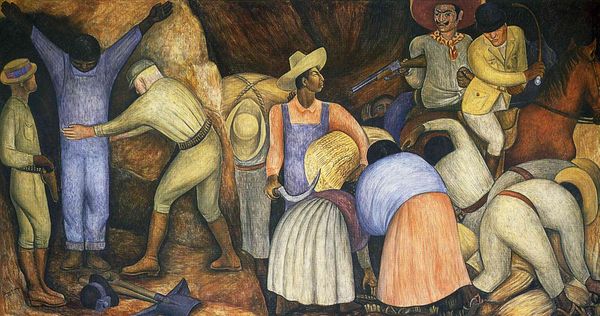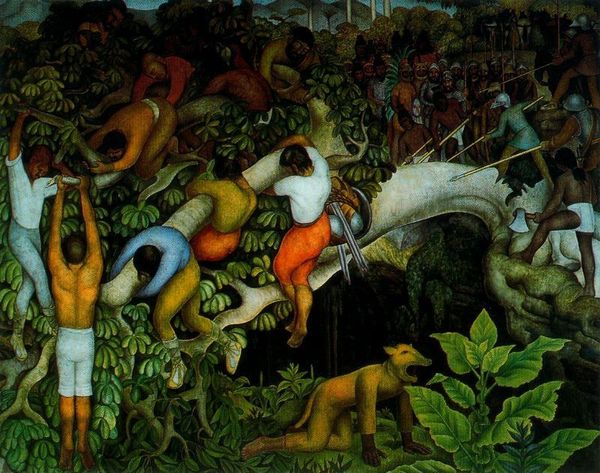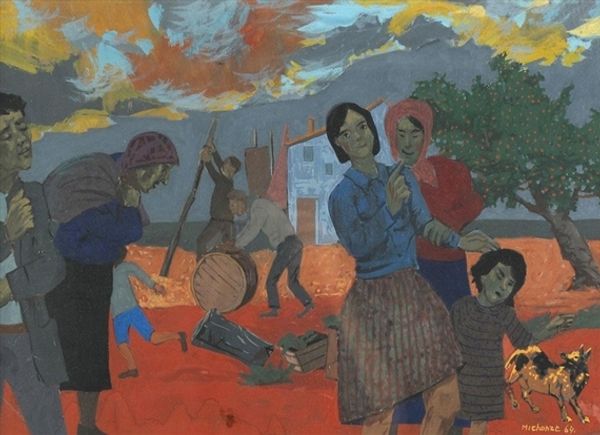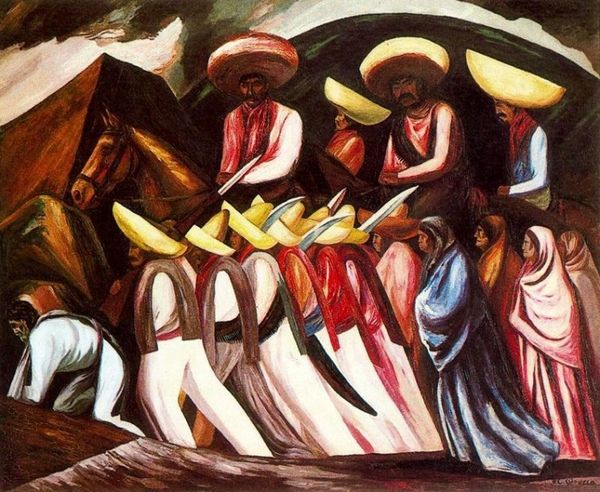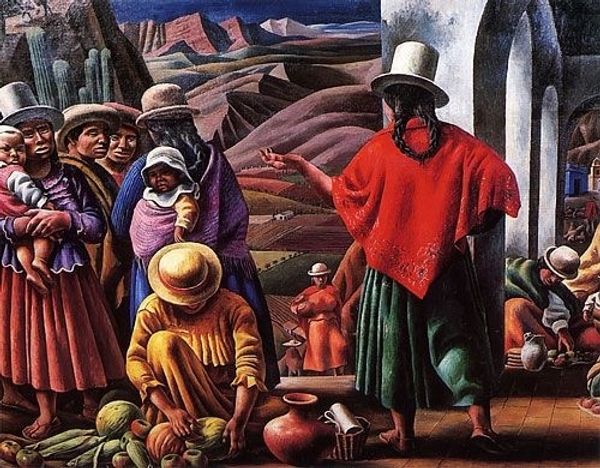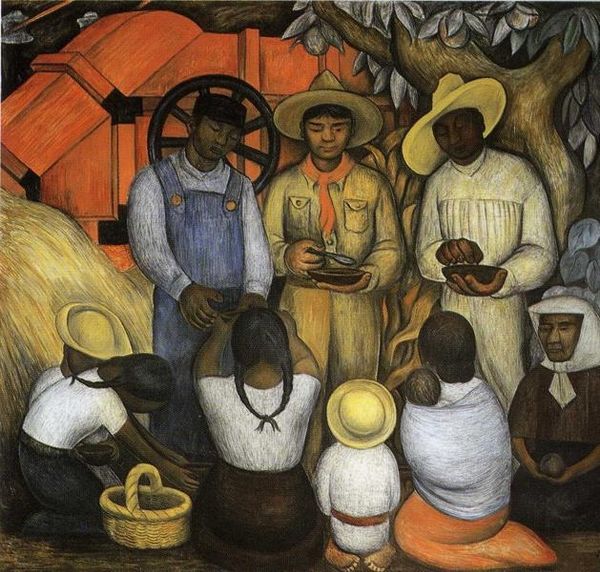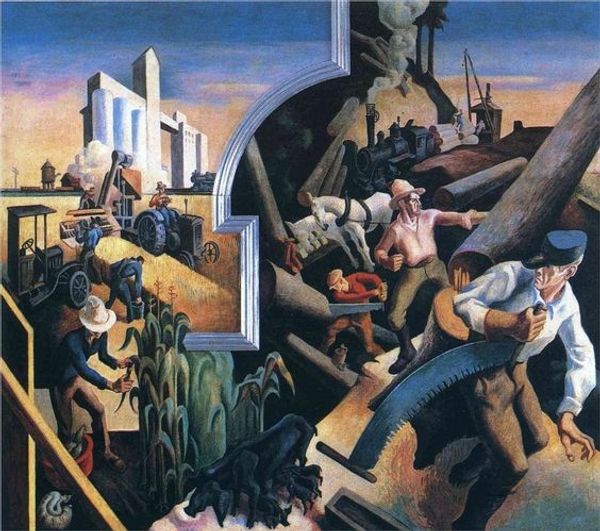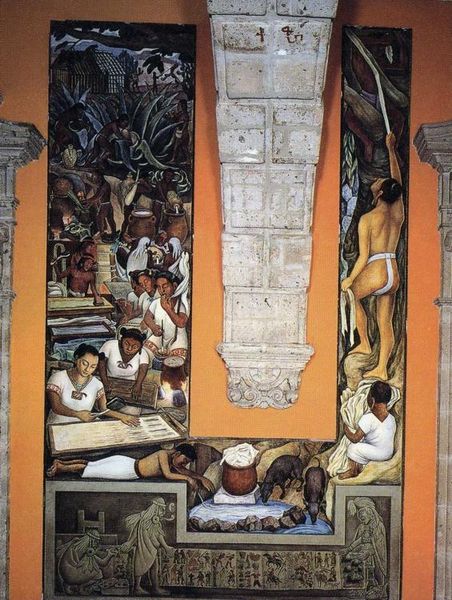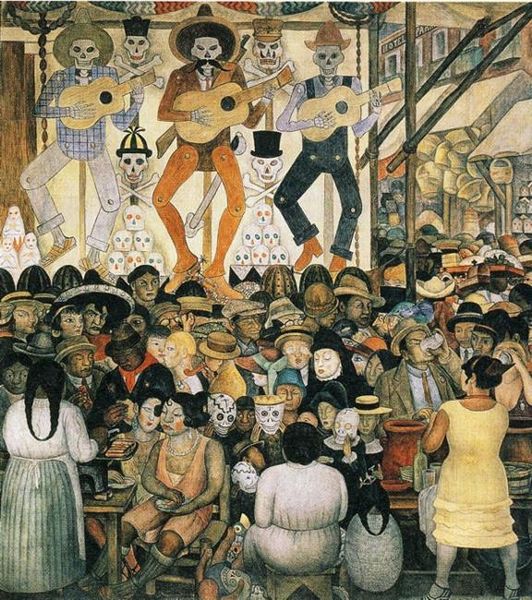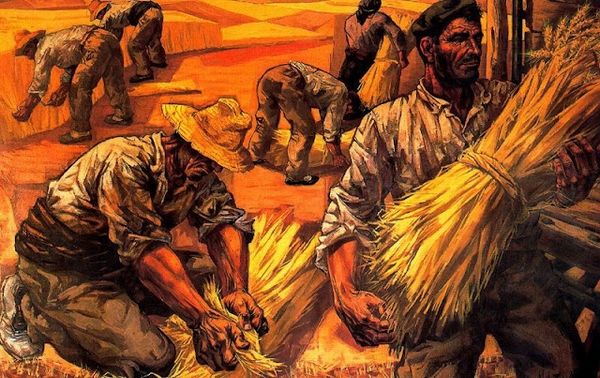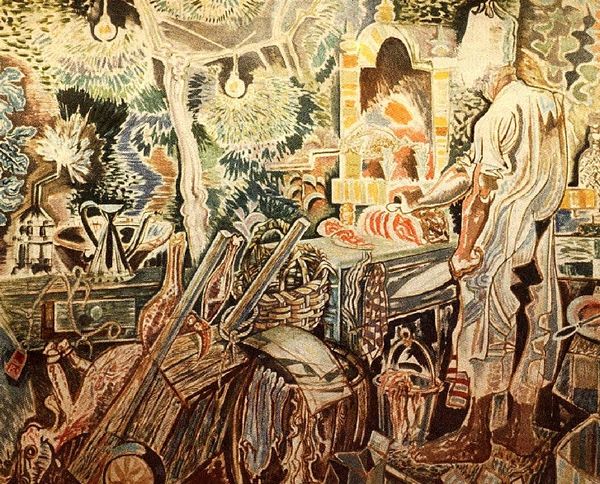
The Mechanization ofThe Country 1926
0:00
0:00
diegorivera
Secretariat of Public Education Main Headquarters, Mexico City, Mexico
painting, oil-paint, fresco, mural
#
narrative-art
#
painting
#
oil-paint
#
landscape
#
figuration
#
social-realism
#
fresco
#
oil painting
#
mexican-muralism
#
cityscape
#
history-painting
#
mural
#
realism
Copyright: Diego Rivera,Fair Use
Curator: What strikes me immediately is the composition—the sheer contrast between the earth tones and that intense red… It's a little overwhelming, actually. Editor: That's Diego Rivera's "The Mechanization of the Country," a fresco completed in 1926, here in the Secretariat of Public Education. It's part of a larger cycle exploring Mexican identity in the post-revolutionary era, grappling with modernization and its effects. Curator: Okay, that context is helpful. I'm seeing now the layers of meaning, beyond the initial…industrial gaze? I'm thinking about how that seated woman anchors the piece. She holds what looks like food but her own resources are bound by the figures around her, on both sides. Is she meant to symbolize some ideal of Mexican agriculture? Editor: Undoubtedly, she embodies an Indigenous presence, a connection to the land deeply rooted in Mexican culture. Look at the agricultural elements – the corn and wheat – she is surrounded by. Yet the encroaching industry, represented by the oil derrick and industrial landscapes behind her, threatens this traditional way of life. It's that push-and-pull that creates tension, as well as discourse about identity, tradition and modernization. Curator: Right. And those almost spectral figures working…what, with cables? There is definitely some kind of power emanating, almost threatening the groundedness of the agricultural scene. Do you think the use of red for the 'power' cables coming down has to do with how resources like oil could have 'saved' the working population. Or just the violence that is often bound to the work in resources? Editor: Interesting observation, definitely relevant in our present world climate and conversations about intersectional labour rights! The red certainly evokes passion, but I'm drawn to that top left group of labourers working in what appears to be new resources or industries. This could be a critique of progress as a kind of destructive force and perhaps about the loss of Indigenous knowledge and the subjugation to western ideologies. The mural almost acts as an archive, representing both an imagined ideal of agrarian society while also the modern industrialization happening in real-time. Curator: Thanks! I see it all very differently now. Rivera manages to encapsulate such complex themes—modernization, exploitation, identity—within a single frame. There’s a lot to process and be aware of as we see our contemporary present unfolding, as well. Editor: Exactly. Rivera's work serves as a critical reminder of how historical and sociopolitical contexts shape our world. It encourages constant questioning, especially concerning identity, the role of visual culture and potential futures that resist traditional power dynamics.
Comments
No comments
Be the first to comment and join the conversation on the ultimate creative platform.
